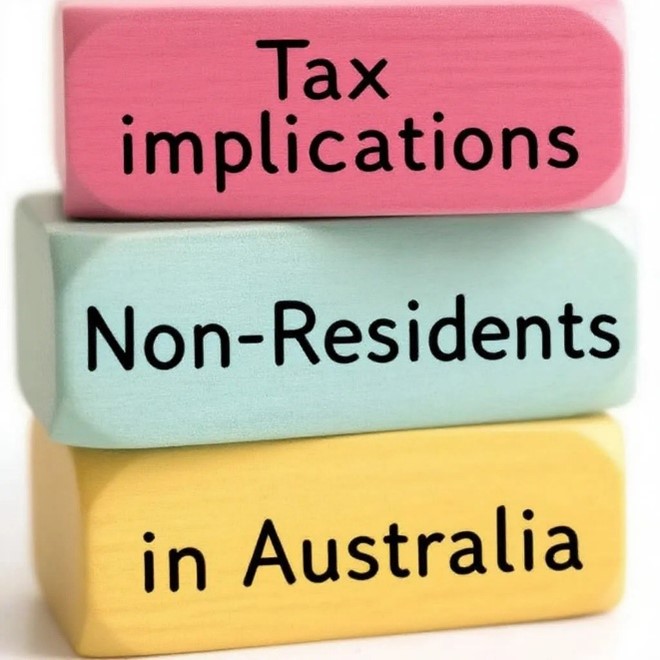For individuals residing abroad or contemplating such a move, the Australian tax implications are a significant aspect to consider. Even as an expatriate, you may have obligations to report your income to the Australian Taxation Office (ATO).
Understanding your tax residency status is crucial to effectively leverage potential tax advantages when transitioning to life in a new country. Transitioning to a non-resident status can optimize your tax position; however, the ATO must officially recognize this change.
While many Australian expatriates residing overseas are typically classified as non-residents, attaining this status is a nuanced process that extends beyond mere physical location. Various factors intersect to dictate your tax residency status, rendering the process more intricate than it may initially appear.
This discourse will explore numerous avenues through which one can shed their Australian tax residency and establish a non-resident status for tax purposes. However, before delving into strategies to cease being an Australian tax resident, it is imperative to grasp the fundamental concepts of Australian tax residency and the residency tests administered by the ATO.
Determining Australian Tax Residency
Before exploring the strategies to relinquish tax residency or transition from being an Australian tax resident, it is essential to comprehend the characteristics of an Australian tax resident. This classification governs which income must be reported to the ATO.
Australian Tax Resident Definition
Distinct from citizenship, tax residency hinges on an individual’s primary location of habitation. The ATO designates you as an Australian tax resident if you meet specific criteria, including:
- Continuous residency in Australia or the establishment of permanent residency in the country.
- Residing in Australia for six months or more, with substantial engagement in work and habitation predominantly centered in Australia.
- Temporarily relocating abroad without establishing a permanent dwelling elsewhere.
- Pursuing international studies in Australia for a period exceeding six months.
Australian Non-Resident for Tax Purposes Definition
Upon cessation of residency in Australia and the establishment of a permanent abode in another country, you typically no longer qualify as an Australian tax resident.
Should you intend to reside overseas indefinitely, the ATO commonly labels you as a non-resident for tax purposes following these circumstances. Nevertheless, these criteria alone may not conclusively ascertain your tax residency status.
You must undergo all four of the ATO’s residency tests, failing each one, to attain non-resident status for tax purposes.
Navigating the Tax Journey
Avoid being overwhelmed by Australian tax obligations while residing abroad. Initiate your tax journey seamlessly!
Understanding ATO Foreign Residency Tests
The ATO employs diverse tests to ascertain whether an individual qualifies as a resident or non-resident for tax purposes. These tests are pivotal for delineating your tax responsibilities, especially in scenarios involving international residency or plans for overseas relocation.
- Resides Test:
This test serves as the ATO’s primary statutory residency assessment. It aims to determine whether you permanently reside within or outside of Australia.
Variables such as the duration spent in Australia, your intentions regarding residing in the country, and the nature of your daily routine and social networks contribute to determining your residential status.
For instance, if your familial, professional, and social connections are predominantly anchored in Australia, you are likely to be classified as a resident under this test.
- Domicile Test
An integral component of the Domicile Test revolves around establishing a permanent dwelling or “domicile” outside Australia. Domicile typically aligns with an individual’s birthplace (domicile of origin) or a chosen permanent residence (domicile of choice).
This test is the most subjective of the four, lacking a definitive framework for discerning a permanent dwelling. Hence, it hinges on subjective influences unique to each person.
For example, an individual born in Australia but residing abroad throughout their life may still maintain a domicile in Australia if they maintain robust familial ties and aspire to permanently return to their country. Conversely, an individual born overseas but residing in Australia for an extended period may lack a domicile if they have severed ties and intend to permanently relocate elsewhere.
Given the subjectivity inherent in the Domicile Test, implementing it in practice can be challenging.
- The 183-Day Test
The 183-Day Test serves as a direct residency evaluation. If you remain physically present in Australia for over 183 days during an income year – whether continuously or with intervals – you are regarded as an Australian resident for tax purposes. However, surpassing the 183-day threshold does not definitively establish residency; you can still posit non-residency by furnishing evidence indicating your primary abode is abroad and your presence in Australia is transient. This proof may encompass documentation showcasing your permanent residency overseas, occupational commitments, and other affiliations signifying your primary life unfolds beyond Australia.
- Commonwealth Superannuation Test Membership in government employee superannuation schemes
Like the Public Sector Superannuation Scheme (PSS) or the Commonwealth Superannuation Scheme (CSS) invariably designates you as an Australian tax resident. Additionally, this classification extends to your spouse and any children below 16 years concerning income tax purposes. The Commonwealth Superannuation Test is more about your professional and superannuation arrangements than your residence. It guarantees that government employees maintain links to Australia for tax considerations, irrespective of their international postings.
Strategies to Relinquish Australian Tax Residency
Equipped with insights into the four Australian residency tests, it is now opportune to explore 22 methodologies to disassemble your Australian tax residency, meticulously tailored to facilitate the transition:
- Relocating to another country and securing tax residency there.
- Remaining outside Australia for over 183 days in a fiscal year.
- Informing the ATO about your non-residency status.
- Presenting evidence of establishing a permanent residence overseas.
- Concluding Australian employment and suspending work within Australia.
- Updating your mailing address to your new residence country.
- Leasing out your Australian property and living abroad extensively.
- Transferring business operations offshore.
- Terminating memberships and subscriptions in Australia.
- Cessation of Australian health insurance.
- Closing all Australian utility accounts (e.g., water, electricity, gas).
- Relocating all family members to reside abroad.
- Acquiring permanent residency in a different country.
- Limiting your visits to Australia.
- Eliminating yourself from any electoral roll.
- Substituting Australian life insurance policies with those issued by your new country of residence.
- Demonstrating a severance of ties with Australia and an intention to perpetually reside abroad.
- Consistently filing annual tax returns and maintaining non-resident status.
- Assimilating into the local social and economic fabric of your new country.
- Discontinuing your Australian driver’s license.
- Engaging in gym or athletic memberships in your new residing country to establish a social network.
- Abandoning Medicare entitlements and securing new insurance in your new country of residence.
Benefits of Forfeiting Australian Tax Residency
Having reviewed strategies to shed your Australian tax residency, it is imperative to comprehend the key advantages accruing from this transition:
- Reduced Tax Liabilities: Your tax obligations narrow down to Australian-sourced income, such as rents from Australian properties. Overseas earnings remain exempt from Australian taxation. This translates to substantial tax savings, especially if you earn a substantial income internationally.
- Exemption from Capital Gains Tax (CGT): As a non-resident, you are usually only liable for CGT on Australian assets, not on asset disposals outside Australia. This proves particularly advantageous if planning to liquidate foreign assets like properties or holdings.
- Exclusion of Worldwide Income Reporting: The obligation to report global income to the ATO becomes void. This can lead to significant savings, especially in jurisdictions with lower tax rates or no income tax, such as the UAE.
- Potential Tax Treaty Advantages: Australia has double tax agreements with multiple countries that delineate cross-border income taxation protocols. As a non-resident, you can benefit from these agreements, averting dual taxation and potentially reducing tax rates on certain income categories.
- Flexibility in International Investments: Being untethered from Australian taxation on foreign investments allows for pursuing opportunities across borders without the encumbrances of Australian tax laws. This translates to enhanced flexibility in orchestrating and expanding global investments.
By relinquishing your Australian tax residency, you open avenues to unbridled opportunities for global investment and income generation, emancipated from Australian taxation constraints.
Drawbacks of Surrendering Australian Tax Residency
Despite the array of benefits from abandoning your tax residency, several drawbacks warrant contemplation:
- Foregone AU $18,200 Tax-Free Threshold: Non-residents forfeit the tax exemption threshold enjoyed by residents. Every Australian-sourced income, whether from property rents or share dividends, is subject to a flat 30% tax rate.
- Superannuation Management Complexities: While retaining your superannuation in Australia is generally permissible as a non-resident, certain complexities may arise. Limited access to superannuation funds could be enforced when no longer an Australian tax resident.
- CGT Discount Loss on Main Residence Transactions: Upon relinquishing Australian tax residency and vendoring your former main abode in Australia, the 50% CGT discount available to expats is forfeited. Selling the property before transitioning to non-residency warrants consideration to avail of this main residence exemption.
While these drawbacks are noteworthy, they should not deter you from pursuing international ventures and career prospects overseas. In scenarios where navigating the labyrinth of global taxation appears daunting, seeking guidance from professionals specializing in expatriate tax matters is prudent.
Seek Expert Counsel on Australian Tax Residency
Engage expert guidance on shedding your Australian tax residency status through our seasoned Australian non-resident tax advisors. We offer comprehensive insights into the intricate rules and regulations underpinning this transformation, delivering tailored solutions aligned with your unique circumstances.
Do not permit uncertainties regarding your residency status to weigh you down – communicate with our specialized tax residency team today to explore how we can assist in actualizing your tax objectives.






